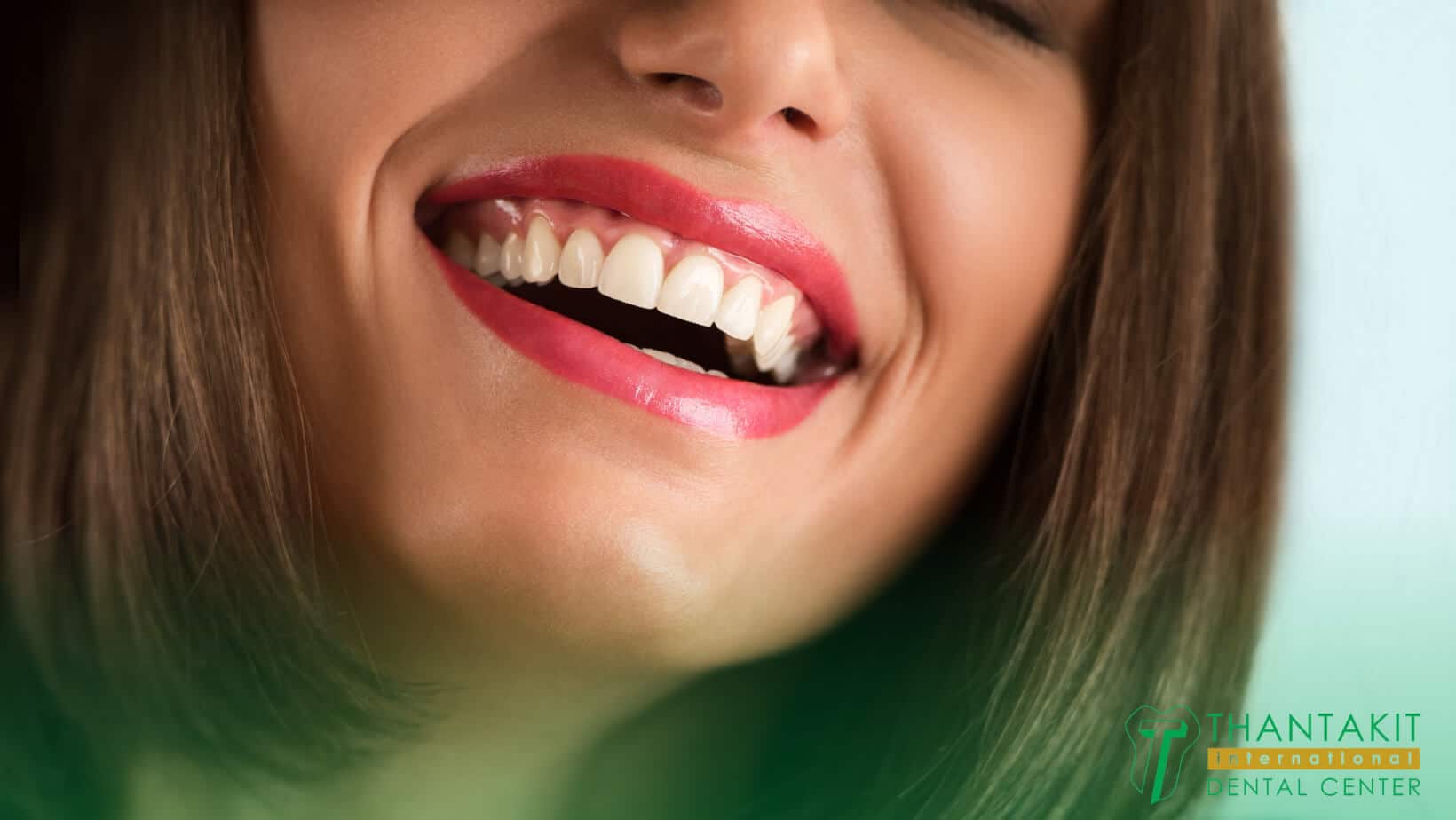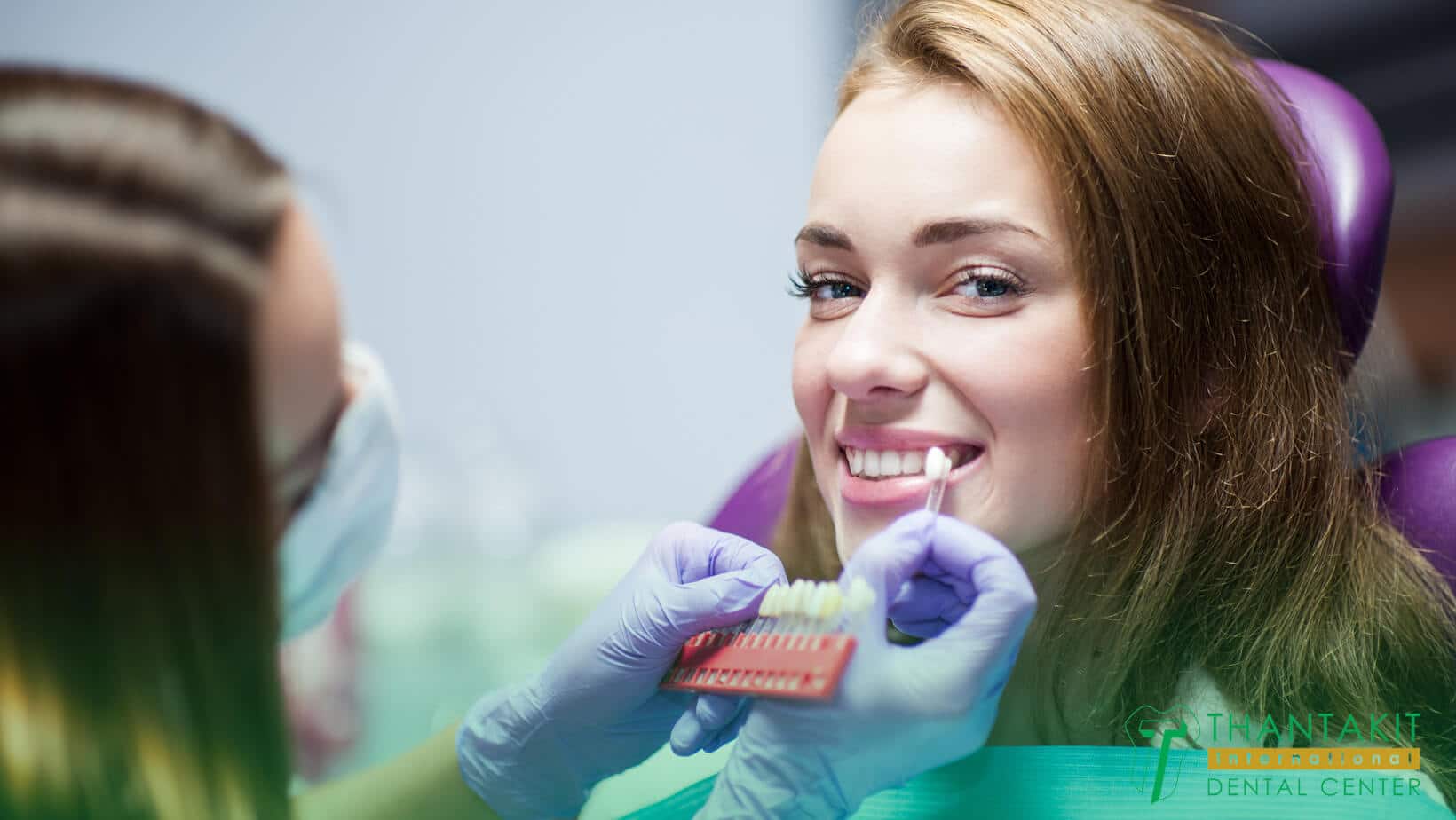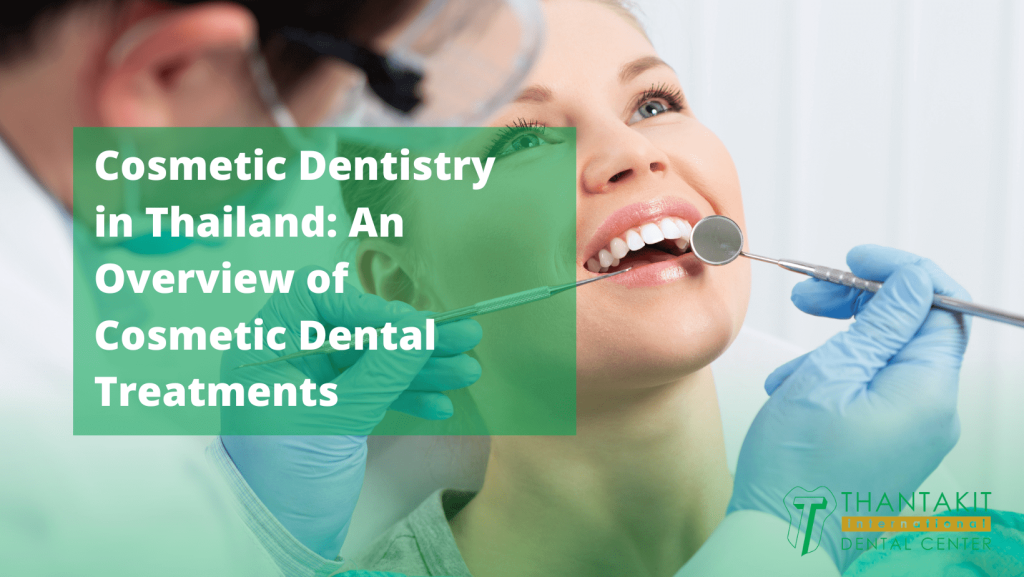Thailand prides itself as the Land of Smiles because of the jolly disposition of its citizenry and also because of its robust medical and dental tourism economy. This robustness extends all the way to cosmetic dentistry in Thailand.
As its name suggests, cosmetic dentistry is any dental procedure that aims to improve the aesthetics and appearance of your smile. Sometimes, as a side effect, it also improves its function, as in the case of your bite and jaw alignment.
The most common cosmetic dentistry services available in Thailand include veneers, dental bonding, teeth whitening, and dental implants.
Page Contents
Why Go for Thailand Cosmetic Dentists?
People go to Thailand for cosmetic dentistry because even when you pay for it out-of-pocket without insurance coverage (and it’s usually not covered by your insurance anyway) and with travel expenses included, it’s still cheaper than stateside or local cosmetic dentistry.
-
Cost-Effective Across the Board: In fact, the only time Thailand cosmetic dentistry prices could possibly cost more than local prices is when you avail of the highest quality service and compare it to what you can normally afford.
At that point, the extra quality is worth the price and when you compare quality for quality, Thailand prices are more affordable anyway.
-
Thailand vs. U.S. Price Ranges: Thailand price ranges vary from ฿8,200-฿22,200 ($240-$650) per crown. In particular, you can avail of crowns for ฿18,000-฿20,000 ($528-$645) per crown at Thantakit. You can avail yourself of zirconium crowns, all-porcelain crowns, or all-ceramic crowns.
In contrast, locally or in places like the U.S., price ranges from $500-$3,000 per crown. The high-quality all-porcelain crowns range from $800-$3,000 per crown, which means even Thantakit’s most expensive crown price is still cheaper than the U.S.’s cheapest price.
There are cheaper places than Thantakit, like dental schools and the like, but the cosmetic dentistry service quality is not as good.
-
Wellness Vacation: Thailand is beautiful. Bangkok is a cosmopolitan paradise rivaling the likes of Tokyo and Shanghai. You can also avail yourself of nearby beaches for the summer after getting dentists to work on your smile.
As mentioned earlier, Thailand is known as the Land of Smiles because of its dental tourism packages and its beautiful panoramas that make you smile. Who doesn’t like high-quality cosmetic dentistry and a vacation at the same time?

What’s the Difference Between General Dentistry and Cosmetic Dentistry?
General dentistry covers the basics of every dentist practice to allow your general practitioner dentist to be a jack-of-all-trades but a master (specialist) of none. This means they’re capable of the basics of cosmetic dentistry as well.
They offer restorative dentistry treatments, which includes putting in bridges and crowns as well as dental fillings. They also do preventative maintenance, like prophylaxis or teeth cleanings. They can also do deep cleanings for those suffering from periodontal disease.
They’re cosmetic in that they restore appearance but they’re also restorative in terms of improving dental health and function.
In contrast, a cosmetic dentist is an aesthetics specialist who focuses on beautifying your smile. Their treatments also deal with restoring functionality, but they have the edge on general practitioners when it comes to improving the appearance of your gums and teeth.
Who Benefits from Cosmetic Dentistry?
You might be a candidate for cosmetic dentistry or restorative dentistry from a general practitioner if you suffer from the following conditions.
-
Misshapen teeth.
-
Misaligned teeth.
-
Cracked or chipped teeth.
-
Teeth staining or discoloration.
-
Small spaces or gaps between the teeth.
Can Any Person Undergo Cosmetic Dentistry?
As long as your gums and teeth are healthy, you can get cosmetic dental treatments. Otherwise, go for restorative dentistry first and heal your unhealthy gums and teeth before dealing with dental aesthetics.
If you have issues involving things like long-standing gum disease or rampant cavities, address those conditions before indulging in cosmetic improvements.
It’s best for healthy patients to undergo cosmetic dentistry because treatments like dental bonding and crown placement will crumble without the foundation of healthy gums and natural teeth.

What are Examples of Cosmetic Dentistry?
It’s the aim of cosmetic dentistry to make a smile that’s more beautiful, symmetrical, and balanced. It should work well and look even better. The most common of these services include gum contouring, tooth contouring, veneers, dental bonding, and (of course) teeth whitening.
-
Teeth Whitening: Teeth whitening procedures, also known as teeth bleaching, is what you use in order to get a brighter and whiter smile. They remove the food stains and gunk built over time, even when you brush regularly.
If you drink coffee and tea or eat berries a lot, these dark-colored foods and beverages can stain your teeth into a darker color. Professional-level teeth bleaching can safely and dramatically brighten your smile to multiple shades.
Quite a number of dentists offer at-home and in-office teeth whitening solutions.
-
In-Office: In-office teeth whitening is a service done in the clinic or an inpatient type of cosmetic dental service. It takes about an hour to finish at the clinic.
-
At-Home: At-home whitening, in contrast, is completed at the comfort of your home using home products you can buy at the dentist or over-the-counter at the nearest pharmacy. It is done over the course of a few weeks.
However, just be warned that people might get side effects such as having sensitive teeth. It’s because the bleach actually permeates deep into the tooth’s outer enamel layer like acid, which can weaken it.
-
Teeth Fillings and Safe Amalgam Replacement: Teeth fillings involve filling in relatively shallow cavities on the tooth’s surface before they could worsen. They’re typically made of tooth-colored resin material or even metal amalgam (usually placed at the cusp of molars).
Dentists can also replace existing amalgam fillings through a safe amalgam removal procedure. Amalgam is made of tin powder mixed with mercury. If you’re uncomfortable with using amalgam as tooth filling, you can safely replace it with resin.
Quality dental centers in Thailand can ensure minimal absorption of mercury for both the dentist and patient as it’s removed and replaced.
-
Tooth and Gum Contouring: You can have a Thailand cosmetic dentist contour your teeth and gums to look a certain way. If you’re unhappy with how low or how high your gums sit or as well as how your teeth are shaped, you can avail yourself of contouring services.
-
Tooth Contouring: The tooth contouring procedure removes bits of enamel to change the shape of misshapen or imperfect teeth, so they’d look more aesthetically pleasing. You can contour your teeth during a single visit at the dental center.
There’s a limit to this though because every tooth only has so much enamel in them. Overdoing it could damage the tooth or result in sensitive teeth with only a thin layer of enamel over the dentin.
-
Gum Contouring: Meanwhile, gum contouring works the same way—if you have excess gum tissue, you can contour the gums by removing the excess tissue. This allows you to avoid having a gummy smile.
As your dentist contours your gums, the excess gum is removed to reshape your gum line into something less gummy and more balanced or symmetrical when all is said and done.
-
Dental Bonding: You’ve heard of tooth filling, wherein tooth-colored composite resin is put inside those cavities to fill them up like asphalt on potholes on the road. Dental bonding also makes use of the same resin.
Instead of cavities, it’s instead used to cover up and conceal cracks, discoloration, and craze lines (hairline cracks) on otherwise healthy teeth. You can “spackle” that crack with resin to hide or conceal any cosmetic imperfection on your pearly whites.
-
Cosmetic Enhancer: It’s something you can use to enhance or improve the appearance of crooked, misshapen, cracked, chipped, or discolored teeth.
-
Appearance Changer: Dental bonding can be used to change the shape of your teeth too, to make them more uniform, wider, or longer.
-
Resin, Adhesives, and a Special Light: After the tooth-colored resin is applied with adhesives, it’s then set or hardened with the application of a special light.
-
Longevity: It lasts from 5 to 7 years. If you want a longer-term solution, look into veneers and crowns.
This cosmetic procedure is favored by dentists because it doesn’t require natural tooth enamel removal compared to, say, tooth fillings. This means it’s a completely reversible procedure.
-
Dental Braces: Dental braces or the practice of orthodontics involve placing metal or clear plastic brackets over your teeth so that over time, they’d align to become straight and aesthetically pleasing. It’s what you can depend on in order to improve your bite.
If you have a scissor bite, underbite, overbite, and so forth, you can realign teeth so that they’re perfectly distributed on the upper and lower jaw of your mouth. There’s much debate on whether they can be considered cosmetic dentistry or not.
They’re borderline cosmetic because they do improve the look of your smile but at the same time they can also be considered restorative or function-enhancing due to the way they realign teeth.
-
Dental Veneers: You can avail yourself of wafer-thin porcelain veneers made of medical-grade ceramic in order to turn cavity-ridden or misshapen front teeth into something more aesthetically pleasing.
Like in the case of dental bonding, veneers can change the look of your natural teeth by hiding cosmetic flaws like discoloration, cracks, and chips with a much thicker material than resin.
Despite how thin they are, these strong shells get bonded to the front surface of the front teeth to change their appearance more drastically than simple teeth whitening. Like in the case of dental bonding,
There are many types of veneer to avail of at a Thailand dental center, such as:
-
Traditional Veneer: It’s the veneer type that’s applied like crowns. You prep the tooth, make a mold, synthesize the veneer, and then bond it on the tooth.
-
Minimal Prep Veneer: This type of veneer skips the mold step and goes straight to synthesis and application using state-of-the-art CAM/CAD tech.
All veneer types require natural enamel removal. This means they can be irreversible or reversible depending on which type you avail yourself of. Minimal prep is reversible since it involves mostly bonding.
Traditional is irreversible because it hinges on preparing (shaving down) the front teeth’s enamel to give way for the porcelain veneers (which require replacement every decade or so).
-
Dental Crowns and Bridges: They’re prosthetics that are permanently cemented onto implants or natural teeth. Only dentists can remove them for replacement or repair. This is in contrast to removable dentures, which require regular cleaning.
-
Crowns: Crowns for the tooth are caps put above the prepped natural tooth or a dental implant with an abutment (filler stud) to make the crown fit snugly while anchored to your jaw.
-
Bridges: In contrast, bridges fit into natural teeth or dental implants the same way, but they usually have one, two, or more teeth in between two crowns. The two crowns serve as the foundation for the rest of the bridge.
-
Dental Inlays and Onlays: Unlike dental veneers that are wafer-thin to create new surfaces for your front-facing teeth, inlays are indirect restorations or fillings for your cavities. They’re typically made of porcelain, gold, and so forth.
They’re like crowns for cavities that you insert to fill in cavities instead of cover them up. Inlays are cemented or bonded into deep cavities. Meanwhile, onlays are placed on the tooth cusp to cover a wider cavity. Here are important things you should know about dental inlays and onlays:
-
Dental Inlay: Tooth restorations placed in deep cavities. They’re longer instead of wider to fill in deep cavities that go beyond the enamel and dentin.
-
Dental Onlay: Tooth restorations placed in wide cavities. They’re wider instead of longer to fill in wide cavities at the cusp of the tooth. They have wider coverage over the enamel layer.
If the damage by the cavity isn’t too wide (onlay) or too deep (inlay), you can use these two to fill them up. Otherwise, use either a dental crown or even a root canal treatment to remove the tooth root and kill the infected tooth to save it.
-
Dental Implants: Dental implants allow dentists to place and anchor artificial teeth like crowns and bridges into the patients’ jaw. The metal post or stud serves as the artificial tooth root, allowing the dental prosthetic to hang like natural teeth.
The dental implant isn’t the cosmetic dentistry service but the crowns it supports. However, without it, your crowns can only cling to a shaven-down neighboring tooth as its foundation. These metal studs have screws on their ends.
The Thailand dentist screws or embeds the implant into your jawbone to stimulate natural teeth attachment. It requires surgery to cut through the gums and reach to the bone.
Sometimes, bone grafting might be called for if your jawbone lacks enough density. After your jaw has healed along with your gums, the metal posts get plugged with an abutment and “crowned” with crowns or bridges to restore your bite.

What are the Benefits of Cosmetic Dentistry?
The advantages of availing of cosmetic dentistry include the following.
-
Boosting your confidence.
-
Enhancement of your smile.
-
Concealing chips and cracks.
-
Brightening dull, stained teeth.
-
Improvement of the shape of your teeth.
-
Bringing balance and symmetry to your smile.
What are the Drawbacks of Cosmetic Dentistry?
Cosmetic dentistry, restorative dentistry, or orthodontic dentistry typically lack insurance coverage. In such cases, it pays to avail of Thailand dental tours. A Thai dental tour allows you to get more affordable cosmetic dental care even without insurance assistance.
Best of all, this is true even when you take into account the cost of travel. Therefore, you can get a wellness vacation out of it despite cosmetic dentistry’s status as being unnecessary from a health standpoint.
You can also get a certain level of commitment from some services. For example, porcelain veneers cannot be reversed and require regular replacement every couple of years.
Why Invest in Your Dental Health
Long story short, it cannot be exaggerated how valuable an attractive set of teeth and dental or oral healthiness is in modern times. People tend to trust people more with attractive smiles than those who have poor dental hygiene.
It’s just human nature and it’s an underlying psychological tendency. The value of a beautiful megawatt smile is worth its weight in dental gold fillings, in other words. Aesthetics should be valued to give yourself a better first impression on people.
Thantakit International Dental Center is Thailand’s longest established dental center. Situated in Bangkok, our clinic is renowned across the world as a destination for world-class dentistry, with most of our patients flying to us from Australia.
Please contact us today and get a FREE dental consultation.













